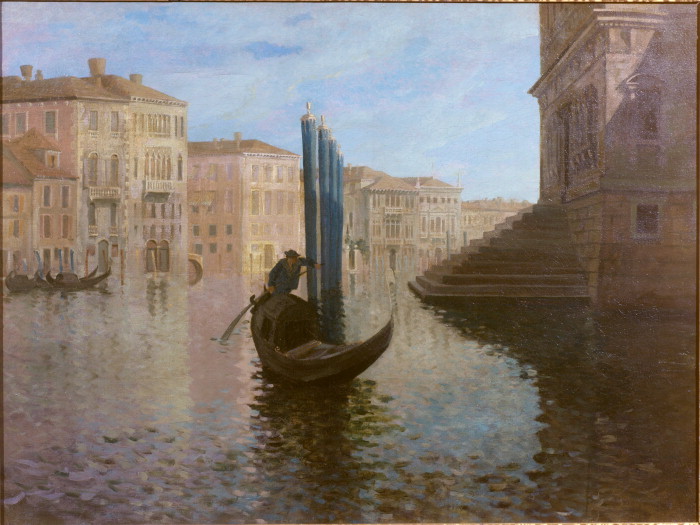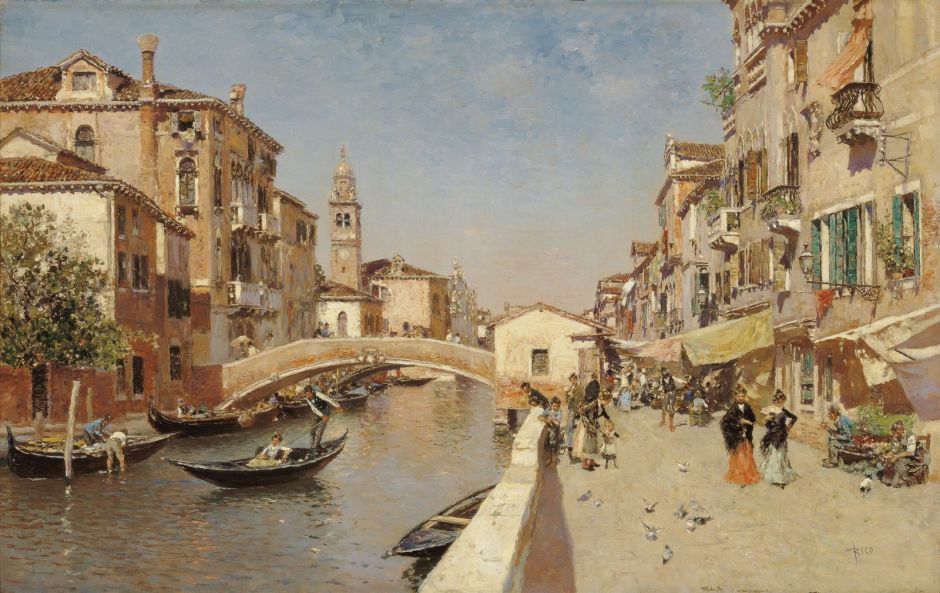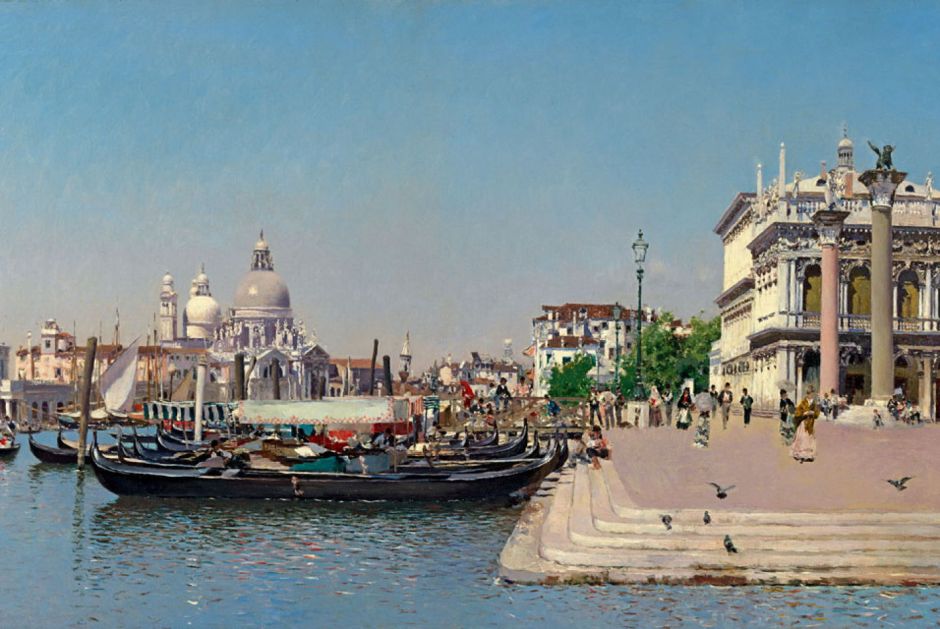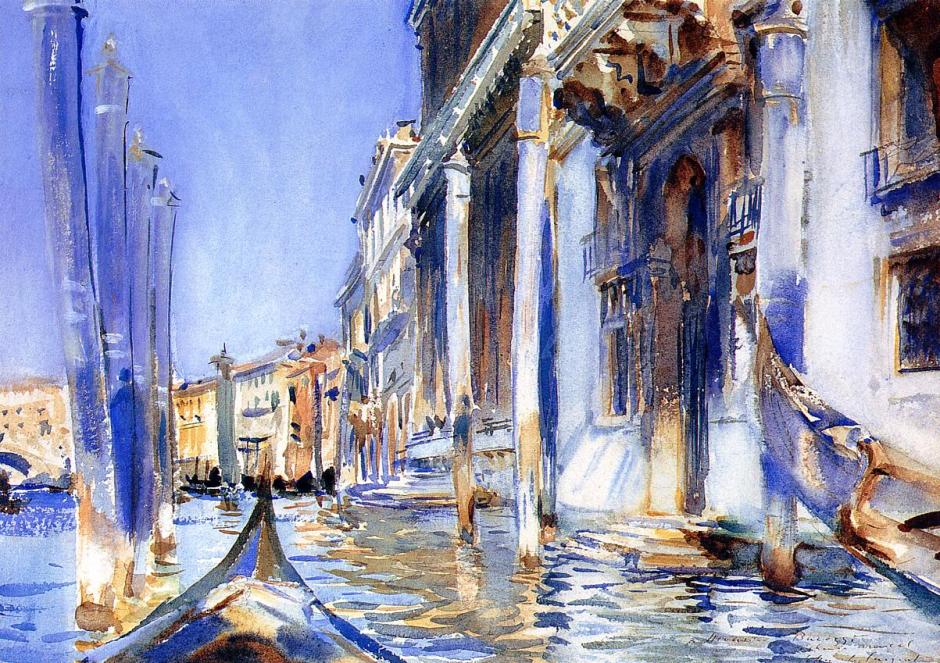Canals of Venice 1895-1903
By the end of the nineteenth century, the city of Venice had become established as an essential visit for every aspiring landscape artist. It not only attracted those painting traditional views (vedute) of its canals, but was drawing those in the avant-garde. This was encouraged by the start of the city’s biennial art exhibition, the Venice Biennale, the first of which opened on 30 April 1895.

The American Post-Impressionist Maurice Brazil Prendergast had a particular affection for the city, which he visited in 1898. The Canal, Venice from 1898-99 shows Riva di San Severo, and makes good comparison with Sargent’s looser watercolours of the canals, such as his Scuola di San Rocco from about 1903, shown later in this article.

Henri-Edmond Cross’s A Canal in Venice is also dated from 1899, and is an unusual Pointillist oil sketch of gondolas in one of the city’s smaller canals. Cross visited the city at this time, and again in 1903 and 1908.

The young Roger Fry, who was to become an influential critic and promoter of Post-Impressionism, went to Venice in 1899 to learn to paint. His early works, including this view of Venice, appear realist with Impressionist tendencies.

Martín Rico was still visiting Venice each summer. Some of his later paintings of the city are more populous and bustling, such as his San Lorenzo River with the Campanile of San Giorgio dei Greci, Venice from about 1900.

In about 1902, Rico painted this more direct view of the church of Santa Maria della Salute, Venice, with a small fleet of gondolas.

The British artist Walter Sickert visited Venice on several occasions between 1894 and 1904. His paintings make interesting comparison with those of John Singer Sargent, who was painting the city mostly in watercolour at the time. Sickert’s oil sketch of Venice, la Salute, thought to have been completed in about 1901, uses muted colours. He has cropped this unusually, showing only a portion of the famous domed church of Santa Maria della Salute. The artist also stressed how he had painted this in “full colour”.

John Singer Sargent visited Venice repeatedly from about 1874, even before he became a student at the École des Beaux-Arts in Paris, and continued to do so after he moved his studio to London in 1886. His watercolour of Rio dell Angelo from 1902 is typically painterly and rich in chroma.

Sargent’s Scuola di San Rocco from about 1903 is one of his best-known watercolours, and another bravura painting.

In 1903, Mykhaylo Berkos visited the city, where he painted this watercolour view of boats On a Canal Near Venice (1903). Although few examples appear to have survived, he was an accomplished and prolific painter in watercolours as well as oils.

Frits Thaulow was an accomplished print-maker, and I think that this version of the Marble Steps (1903) in Venice is an aquatint. It shows the different approach he used to represent the broken water surface and its reflections.
In the early twentieth century, Venice was to become a focus of attention for the more avant-garde, notably Post-Impressionists with Pointillist techniques.